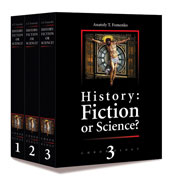History Online - Michelangelo
[an error occurred while processing this directive]Michelangelo
Michelangelo, born in 1475 in a small town near Florence, is considered to be one of the most inspired men who ever lived. He was born to Ludovico Buonarroti, who had major connections with the ruling Medici family of the time. By the time Michelangelo was a young man, he was apprenticed to Domenico Ghirlandaio, a painter of the day, and did many commissioned works. Soon thereafter, Michelangelo was invited to go live in the court of Lorenzo de' Medici where he met future Popes Leo X and Clement VII (both Medici's), as well as Renaissance humanists Marsilio Ficino and the poet Politian. By the time he was sixteen, he had already two sculptures under his belt; The Battle of the Centaurs and The Madonna of the Stairs. After his teacher's death, and the expulsion of the Medici family, Michelangelo fled Florence (though he would retain his love for his home region throughout his life).
Michelangelo then settled in Bologna, where he completed several statues for the Arca (shrine) di San Domenico in the Church of San Domenico. Michelangelo made his way to Rome, where he was able to study newly unearthed Roman ruins. Not long after, Michelangelo produced his first larger-than-life-sized sculpture, Bacchus which was modeled after a pagan Roman god, and reproduced from the style he saw in the ancient ruins. About that same time, he also created one of his greatest masterpieces, La Pieta, in which he shows the Blessed Mother as restrained in her grief, but with real human expressions.
Michelangelo soon created another masterpiece, David which shows the naked biblical David waiting to meet his foe, Goliath. In this sculpture, Michelangelo not only proved that he was the best artist of his time, but even better than the ancient artists he emulated as well.
About a year after creating David, Pope Julius II summoned Michelangelo to Rome to work on his most famous project, the ceiling of the Sistine Chapel. He went on to paint, on the vault of the papal chapel, several scenes from Genesis, namely; God Separating Light from Darkness, The Creation of Adam, The Creation of Eve, Temptation and Fall of Adam and Eve, and the Flood.
Before completing his work on the Sistine Chapel, the pope asked Michelangelo to decorate his tomb for him, which was planned to be the greatest tomb of Christian times, and set in St. Peter's Basilica. Michelangelo had begun to make his 40 figures for the tomb, when the Pope announced that they were low on funds, and he favored Michelangelo to finish the ceiling of the chapel instead. It was in the Sistine Chapel that he created fine work such as The last Judgment and The Creation of Adam. When he finally went back to the tomb, he decided to make it much more modest. Nonetheless, he produced some of his finest work for the pope's tomb.
Michelangelo's skills as a architect had come into its own by 1519, when he was asked to design the Laurentian Library. Although much of Michelangelo's work was inspired by Greco-Roman style, he did not stay only to this style, and used brackets and columns for his own artistic vision.
While residing in Florence for this extended period, Michelangelo also undertook-between 1519 and 1534-the commission of the Medici Tombs for the New Sacristy of San Lorenzo. His design called for two large wall tombs facing each other across the high, domed room. One was intended for Lorenzo de' Medici, duke of Urbino; the other for Giuliano de' Medici, duke of Nemours. The two complex tombs were conceived as representing opposite types: the Lorenzo, the contemplative, introspective personality; the Giuliano, the active, extroverted one. He placed magnificent nude personifications of Dawn and Dusk beneath the seated Lorenzo, Day and Night beneath Giuliano; reclining river gods (never executed) were planned for the bottom. (Encarta '98)
Michelangelo's crowning achievement as an architect was his work at Saint Peter's Basilica, where he was made chief architect in 1546. The building was being constructed according to Donato Bramante's plan, but Michelangelo ultimately became responsible for the altar end of the building on the exterior and for the final form of its dome.

